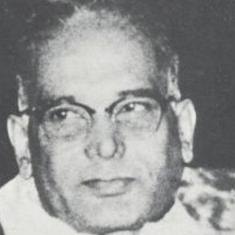In the border village of Bamial, about 40 kilometres to the west of Pathankot, tempers are running high.
The village is believed to be one of the likely places from where the terrorists who attacked the Pathankot air force base in Punjab entered India. The military operations to neutralise the terrorists ended on Tuesday, about 80 hours after they began.
Bamial is certainly close to the border. Its fields press up against the barbed wire fence patrolled by India’s Border Security Force. Some villagers also farm in the no man’s land beyond the barbed wire.
On Tuesday, locals directed their ire at the Border Security Force and the Punjab police for not doing their job. “Abhi log dehshat mein hain (People are scared just now),” said a local reporter. “Some people are saying as many as 15-20 people have come in.”
The reporter, speaking on condition of anonymity, blamed the Border Security Force, which patrols India’s international boundary.
“This area has three-four loopholes. After the rains every year, the fencing over the streams gets washed away. While swimming in the river, it is so easy even for us to accidentally leave India.”
This year, he said, a 50-metre length of fence was washed away on one stream, Tarna. On another, Ugh Dariya, a 1-km length of the fence was lost. Gaps such as these make it easy for infiltrators to come in. However, “the BSF is instead pinning the blame on Pahadpur in Jammu and Kashmir, where there is frequent artillery firing,” the local reporter added.
Lingering questions
This is not the first instance of India’s border security being found wanting in Punjab. Last July, the state saw a similar terror attack on a police station in Gurdaspur – about 37 kilometres from Bamial. A few months later, in November, a drunk NRI drove his SUV right through India’s roadblocks at the Wagah border, coming to a stop only after ramming into the Pakistani side of the border gate at the zero line.
When asked about the force’s apparent failures, a BSF official who had come down to Bamial from Delhi said the force was trying to understand how the infiltrators got in.
There are failings that Punjab’s police department too needs to investigate. While the Border Security Force is entrusted with ensuring that no-one illegally enters the country, security within the state is the responsibility of the Punjab police. The Pathankot instance reveals something went wrong.
To start with, there is the curious instance of the local Superintendent of Police Salwinder Singh. Transferred from Gurdaspur (the site of the previous attack) just a day earlier, he was driving to Pathankot with his cook and a jeweller friend in his private SUV (albeit with an official beacon) late at night when they were reportedly stopped by the terrorists, who tied them up and took the vehicle. That was on Friday night. By this time, the terrorists had already killed a cab driver. Despite Singh alerting the Punjab police, it was slow to stir.
What also perplexes is that the terrorists managed to enter the Pathankot airbase without an alarm being raised. This, despite the presence of police check posts near the spot where the cab driver was killed and along the route the infiltrators took to the airbase.
Illegal trade
Why was the police so slow? According to Master Mohan Lal, a local Bharatiya Janata Party leader and former state transport minister, “Police lethargic ho gayi hai. There is no exercise. No penalty for havaldars (constables) who don’t come for the roll call.” From top to bottom, he says, the force has been politicised.
One reason for the politicisation is local. Pathankot and Gurdaspur are the two districts which supply Punjab with sand and crushed stone. People connected to the stone crushers told Scroll.in the business is mostly illegal and controlled by local and state politicians. To move up and down the broken roads of this part of Pathankot, trucks need policemen who are willing to look the other way.
It’s not clear if the politicisation has affected the police’s functioning in other ways as well. But, as India looks for answers after the end of the Pathankot operation, this could be a question worth asking.










